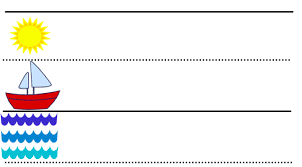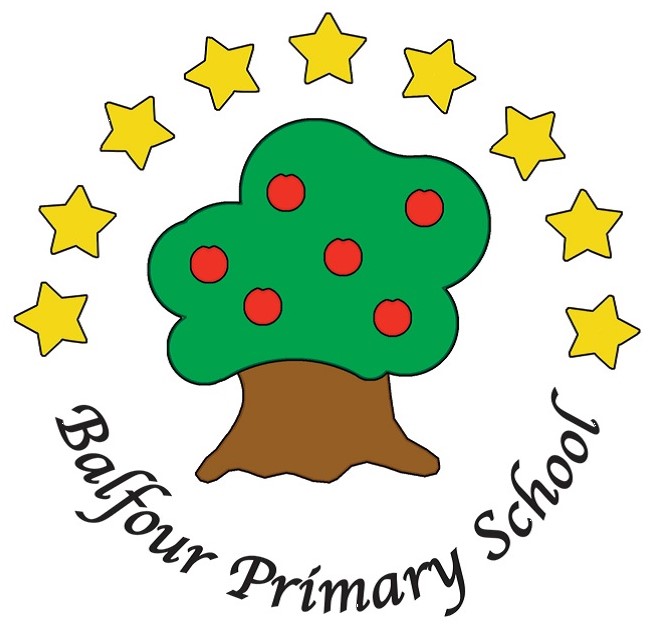Handwriting
Developing Handwriting at Balfour Primary School
At Balfour Primary School, we follow the RWI programme for the early stages of taught handwriting and aim to make the physical process of writing – handwriting – enjoyable from the start, so that children can see themselves as ‘writers’.
We use the RWI mnemonics – memory pictures – to help children visualise the letter or join before they write it down. Therefore, children learn the letter formation alongside learning the sound.
We ensure that children practise handwriting under the guidance of a teacher so they do not develop habits that will be difficult to undo later. In addition to this, we place emphasis on being ‘writing ready’ by teaching the children how to adopt an appropriate writing posture. We encourage writing to take place with:
- feet flat on the floor
- bottom at the back of the chair
- body one fist from the table
- shoulders down and relaxed
- back leaning forward slightly
- left/right hand holding the page
- left/right hand ready in a tripod grip
In order to support our children in learning to write, we ensure that the classroom environment allows for them to stay focused and attentive to their task.
In addition to practising writing, we recognise and value to importance of developing children’s fine and gross motor skills to enable them to have the strength required for pencil grip accuracy and posture.
We ensure that children have opportunities to target their fine motor skills with purposeful tasks in the learning environment, as well as engaging in whole class activities like ‘Funky Fingers.’ To support children’s gross motor development, we have a variety of active opportunities for body strengthening in the outdoor learning environment.
Read Write Inc stages of Handwriting development
There are 3 stages of handwriting using the Read Write Inc programme.
Stage 1a:
During Stage 1 children learn correct letter formation using the same picture mnemonics they have already learnt in the Set 1 sound lessons.
These letters are taught in handwriting groups:
- ‘Around’ letters: c a o d g q
- ‘Down’ letters: l t b p k h i j m n r u y
- ‘Curly’ letters: e f s
- ‘Zig-zag’ letters: v w z x.
During these early stages, children write on plain paper.
Stage 1b:
Once children can form the letters correctly, they learn how to place the letters on the line and of relative size. Children are encouraged to continue using the picture mnemonics help children to visualise the size and placement.
The Read Write Inc programme uses the boat and waterline as a guide for children to learn to form their letters within size and orientation. See below:

- Some small letters are called ‘boat letters’: a c e i m n o r s u v w x z
- Letters that are written below the line are called ‘water letters’: g j p q y
- Tall letters are called ‘sun letters’: b d h k l t f
At this stage, children are encouraged to write on wide-lined paper.
Stage 2
During Stage 2, children are now taught that they are going to use new characters to help them develop a grown-up style of writing that will lead to joined-up writing. New pictures will help them to visualise the new shapes.
The children are introduced to the formation family: six sisters, two uncles and their two pets.
The six sisters – Annie, Dina, Gabi, Olivia, Carina and Queenie – all look the same. Their mother tells them that they must all have a different haircut so people can tell them apart!
The uncles – Uncle Umberto and Uncle Yaseen – look just like the sisters, except they are bald on the top of their heads.
The family have a dog and a bunny whose faces are very similar too, but they have long ears.
(See Read Write Inc Stage 2 Handwriting document for further guidance and explanation).
Stage 3
The final handwriting stage within Read Write Inc, introduces the children to two joins:
- The arm join (diagonal)
- The washing line join (horizontal)
Both joins have three variations.
(See Read Write Inc Stage 3 Handwriting document for further guidance and explanation).
Handwriting fluency and stamina
As a school, we would expect and aim for most children to start joining their handwriting by the time they reach KS2. There is an expectation that children develop their use cursive writing during Years 3 and Year 4, in line with the National Curriculum expectations. By Years 5 and Year 6, children are expected to be able to write legibly, with increasing speed and fluency.
For children who are struggling to develop their handwriting skills, we continue to support them with strengthening their fine motor skills and offer them a range of support and writing tools to try and develop their handwriting. In some instances, small group intervention is required to assist in the development of handwriting.
At KS2 the expectation is for children to have cursive handwriting modelled to them by their teacher during any shared writing. It is an expectation that no matter what the subject area being taught, children maintain their handwriting style and presentation.
